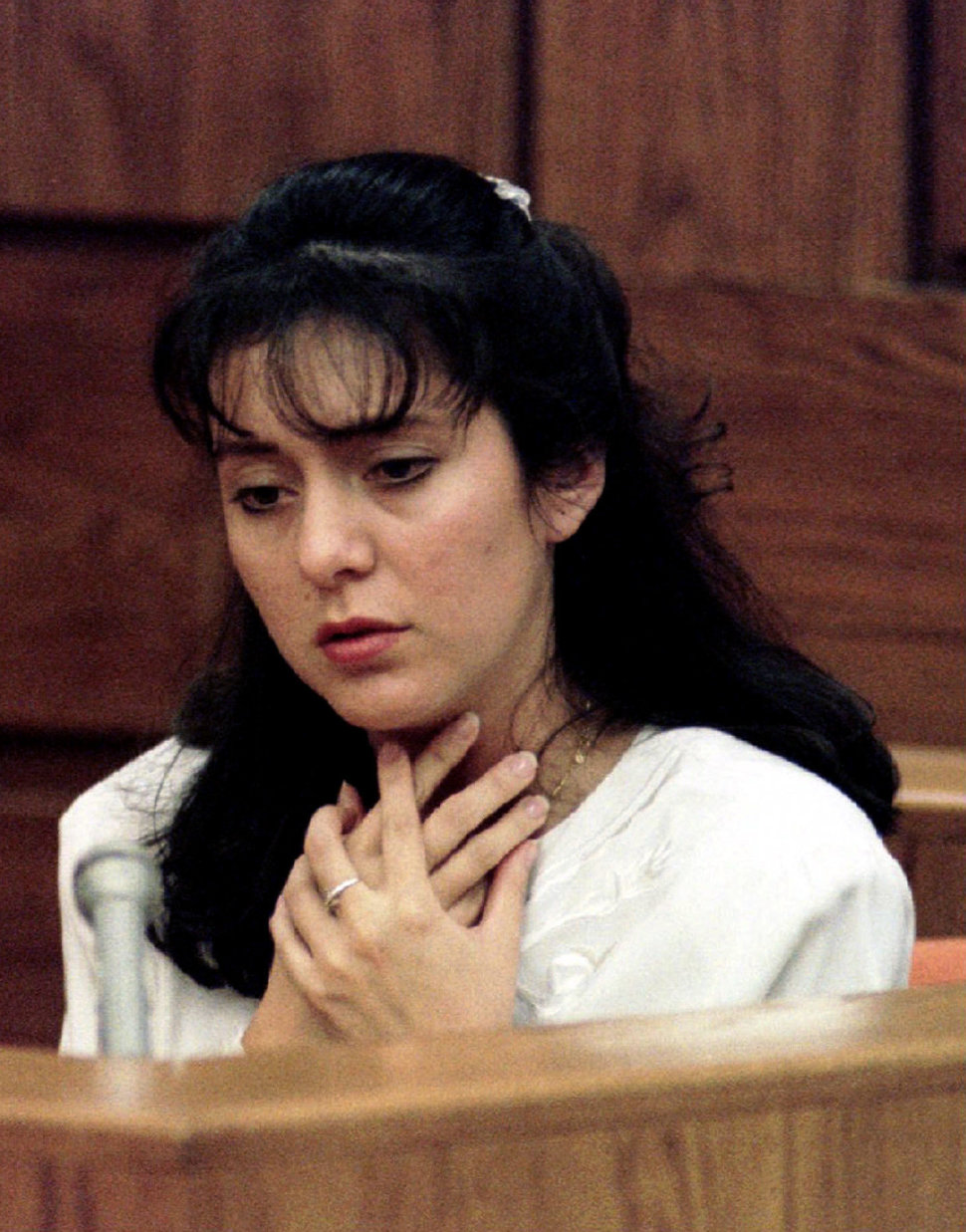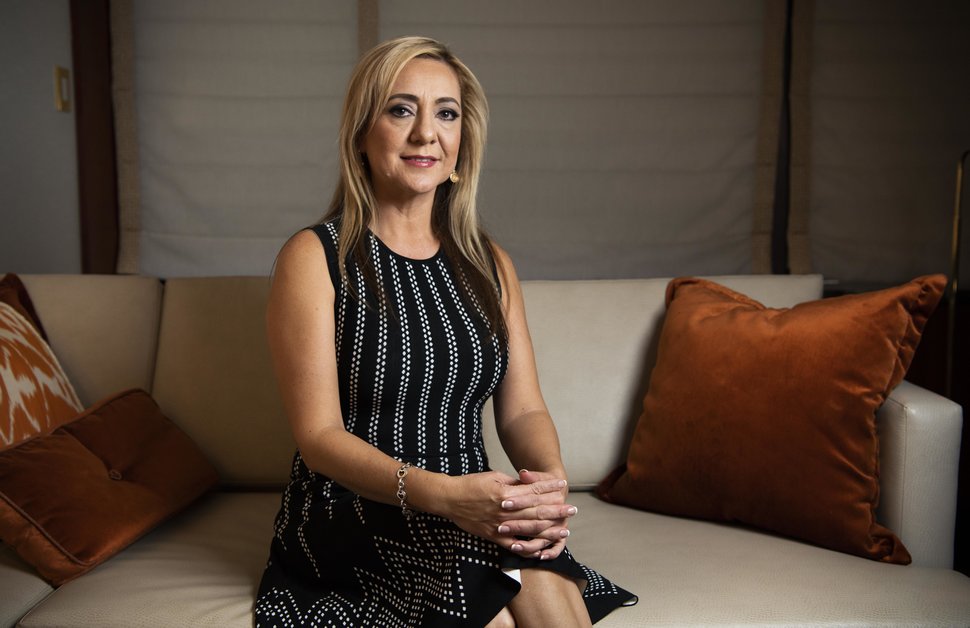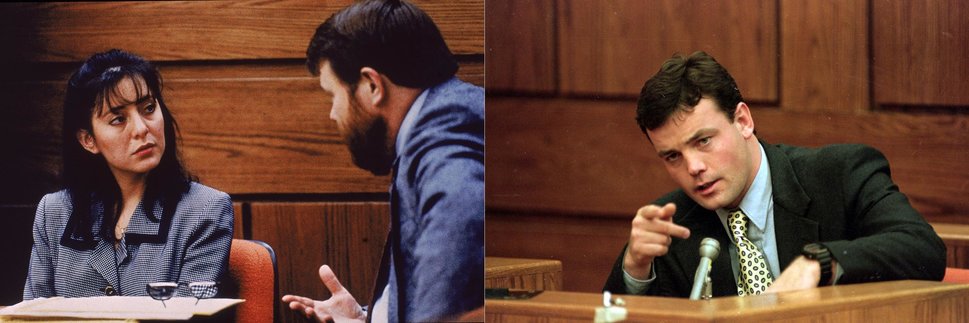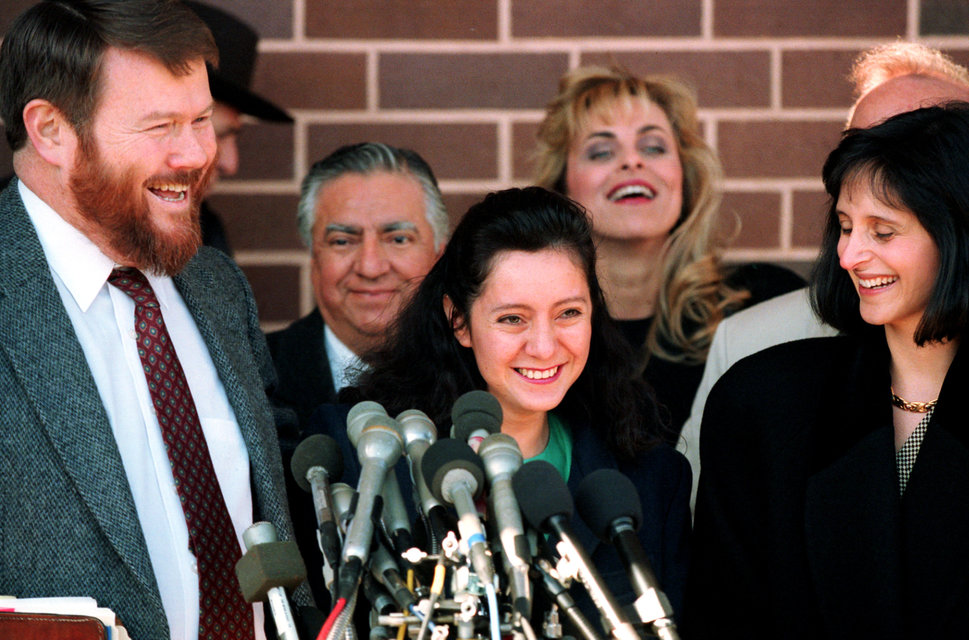[ad_1]
Lorena Bobbitt is beaming. It isn’t yet 1 p.m., and she has already done on-camera interviews for the “Today” show and “Un Nuevo Día,” Telemundo’s morning show, from her suite at the Lotte New York Palace hotel. The room is bustling with female journalists waiting for their turn to speak with her.
For Lorena, this is the most media attention she has received in 26 years, since the “incident,” as she calls it. Back then, she had an acrimonious relationship with the press, who found so much humor in what was the worst night of her life. Not incidentally, they skewed heavily male. (Notable men who covered her case included Charlie Rose, Matt Lauer and Geraldo Rivera.) All they wanted to talk about was her infamous act and not what caused her to do such a shocking thing ― to take a knife, cut off her husband’s penis and toss it out a car window like a discarded apple core.
When Lorena spots me, she rushes over, petite even in three-inch sparkly heels, and presses her hands to my shoulders. “Melissa!” she exclaims, eyes shining. “It’s so good to see a familiar face!”
Lorena and I met only once before, but it was an encounter that played a key role in her present-day return to the national spotlight. In 2016, I contacted her to see if she’d be open to an interview. I had been thinking about the ways in which the media vilified high-profile women of the 1990s, like Monica Lewinsky and Anita Hill, and wondered what had been left out of Lorena’s story.

When the world learned her name, Lorena was a 24-year-old immigrant manicurist in the process of leaving her husband. As she recalls it, John Wayne Bobbitt used to kick, hit, choke and rape her. On June 23, 1993, she says, he held her down by her wrists as he’d done time and time before and sexually assaulted her. Afterward, she went to the kitchen to get a glass of water and saw a knife. Her next vivid memory is driving her car and throwing a severed penis out the window. It was later successfully reattached to John Wayne.
She was charged with malicious wounding ― an offense for which she faced up to 20 years in prison. He was separately charged with marital rape. Both went to trial, though only hers was televised, and both were acquitted.
I told her that I wanted to retell her story through a contemporary lens because it seemed no one in my generation remembered the vicious accounts of domestic abuse and marital rape that she said triggered her assault. All anyone recalled were the jokes made at her expense.
She was the subject of “Saturday Night Live” skits, late-night comedy routines and a “weenie wacker” song to the tune of “The Lion Sleeps Tonight.” She became so infamous that someone nicknamed a horrific sea worm known for its severing abilities after her.
The only thing that stuck in the national consciousness was that penis.
Lorena, wary of the media after how she’d been treated, needed convincing. After four months of emails and calls, I visited her in Virginia, where she lives with her partner, David, and their 13-year-old daughter, Olivia. In the resulting profile, “Lorena Bobbitt Is Done Being Your Punchline,” I wrote about how her 15 minutes of fame could have launched a national dialogue about domestic abuse. Instead, it led to a deluge of dick jokes.

After our meeting, we kept in touch via text. She told me that my story prompted a wave of messages from survivors. Someone else read the piece too: Joshua Rofé, a documentary filmmaker. He told her that he wanted to capture her on film, telling her story on her terms. Two years later, Amazon’s four-part docu-series “Lorena,” executive-produced by Jordan Peele, is set to stream on Amazon, starting Feb. 15. (Full disclosure, I’m in it.) Using original interviews with Lorena, John Wayne, police, neighbors and domestic violence advocates, the documentary re-examines her place in U.S. history.
Over lunch in Manhattan this week, I asked Lorena — who now goes by her maiden name, Gallo — how she felt about being in the national spotlight again.
“I am thriving!” she replied. It took two and a half decades, but journalists are finally talking about the gravity of domestic violence instead of her ex-husband’s external organ, she said. She pulled out her phone and started showing me articles from the past week about men who killed their female partners. “Did you see this one?” she asked. “He choked her and threw her in a lake!”
Her decision to participate in the Amazon documentary was a complicated one, she said. For years, she kept mostly out of the public eye while running a small charity to help victims of domestic violence. Sometimes she would consent to a televised interview so she could talk about her work, she said, even though she knew she’d be the butt of a joke about penises. It was a trade-off she was willing to make. But Rofé convinced her that he could tell her story with as much detail as she needed, that the world was finally ready to really hear her above the buzz of the laughter.
Even decades later, it remains viscerally distressing to watch footage from Lorena’s trial. In clips included in the documentary, she shrinks in her seat, shakes and cries as she describes being raped and beaten by her husband. Her testimony is backed up by a procession of credible witnesses. One client at the nail salon where she worked as a manicurist recalls seeing her arms covered in dark bruises. A neighbor testifies that Lorena confided about John Wayne’s relentless violence. The jury is shown photos of her bruised and cut face.
For her, watching footage of herself from that time — mobbed by the media, breaking down in court, insecure and fragile — was the hardest part of doing the documentary. Every time she watches it, she cries; her maternal instinct kicks in and she wants to hug the young Lorena.
“I was in survival mode, consumed with fear for my life, and I didn’t even know how to help myself,” she said. “I felt hopeless.”

In many ways, Lorena is in a stronger position to tell her story now, as a 49-year-old woman, she said. She has had time to go to therapy, to become a mother, to mature.
The culture is also better positioned to hear her, she added, noting how the Me Too movement has raised awareness about systemic sexual abuse of women.
For those who are old enough to remember the Bobbitt case in detail, perhaps the most shocking part of the documentary is finding out what happened to the couple in the years since their respective court dates. While Lorena has lived a fairly quiet life, John Wayne has been arrested multiple times for domestic violence offenses involving two other women.
One of those women is interviewed in the series. In chilling detail, she describes being beaten by John Wayne, hung over a balcony by her legs and then tied to a bed and raped.
“He told me I was his Lorena now,” she tells the camera. “Neither she or I or anyone he’d been with would ever escape him.”
Lorena said she was devastated when she heard the woman’s story. “I felt horror,” she said. “Obviously, he hasn’t changed. It didn’t surprise me because I lived with him. I knew his ways.”
John Wayne denies hurting anyone. He too has been back on the media circuit, doing interviews. Does it bother Lorena to see him on TV, I wondered, telling the world that she was a liar?
“That’s the beautiful thing about this country,” she said matter of factly. “He has the right to tell his story or whatever he calls it. It doesn’t affect me at all. People are very smart. They will be able to work out what really happened.”
She shrugs, takes a sip of tea.

“He doesn’t define who I am. Nope. My mind is clear. I am focused. There is no time for me to hear about the peanut gallery, so to speak,” she said. She paused.
“I said peanut gallery!” She broke into a mischievous smile. The jokes are hers now.
While Lorena and I spoke at her hotel, her daughter and partner were out in Times Square, trying to find the Amazon billboard with her name on it, but they had no luck.
When Olivia was in kindergarten, Lorena told her the bare bones version of what happened: A man hurt Mommy, and she hurt him back. Over the years, she hesitated to say much more. “I didn’t want to open Pandora’s box,” she said.
But she took Olivia to the Sundance Film Festival in Park City, Utah, for the premiere of “Lorena.” While Lorena was busy doing an interview, Olivia and David were in a theater, watching the series. For the first time, her daughter got the whole story.
Later, they went back to their hotel room. Olivia told her mother she never knew how strong she was, Lorena said. They cried and hugged. Everything was out in the open now.
I asked Lorena how she felt about her legacy. Did she think the documentary would change how she is remembered? Does it matter?
“I don’t know if this is the right way to say it, but I feel vindicated,” she said. “To be understood … I feel free. I walk with my head high.”
[ad_2]
Source link

